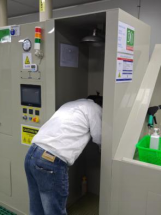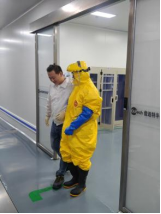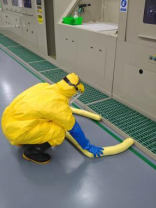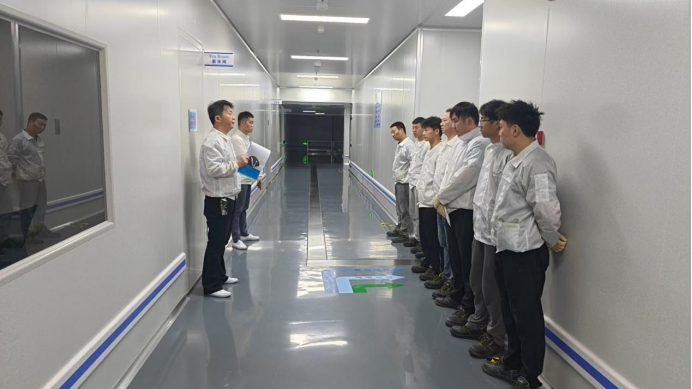To enhance emergency response capabilities for hazardous chemical leaks and validate the scientific rigor and practicality of contingency plans, the company conducted a live-action emergency drill simulating a hydrofluoric acid splash injury incident at the cleaning workshop on May 29, 2025. The drill covered the entire process, including plan activation, first aid for casualties, on-site handling, and environmental control. Key company personnel, staff from the Safety and Environmental Protection Department, and employees from the Cleaning Workshop in the Production Department collaborated across multiple departments.
I. Drill Background and Objectives
Hydrofluoric acid (HF) is a highly corrosive and toxic inorganic acid. Skin contact can cause deep tissue necrosis, inhalation of high-concentration vapors may lead to asphyxiation, and direct discharge without treatment can severely contaminate soil, water bodies, and surrounding facilities.
This drill simulated a scenario where HF splashed and injured an operator during addition in the cleaning workshop. Its objectives were:
Verify the feasibility of the “Emergency Response Plan for Hydrofluoric Acid Splash Injuries During Workshop Addition” to ensure swift and orderly rescue operations during incidents; Enhance employees' emergency response skills, safety awareness, and self-protection capabilities; Identify weaknesses in emergency procedures to refine the contingency plan system.
II. Drill Process and Personnel Assignments
(1) Emergency Response Activation
At 8:35 AM, an “injured worker” in the cleaning workshop cries for help due to hydrofluoric acid splash. On-site colleagues immediately report to the Production Department Manager, who escalates the report to the Chief Commander (company principal responsible person). The Chief Commander immediately issues the emergency plan activation order. The Deputy Chief Commander (Safety and Environmental Manager) swiftly assembles the ERT emergency team, with each team initiating actions according to their responsibilities.
(2) Casualty First Aid and On-Site Treatment
Emergency Flushing: The Rescue and Disaster Relief Team donned protective gear, transported the “casualty” to the full-body shower and eyewash station, and flushed the affected area with copious amounts of running water for over 15 minutes. Calcium gluconate ointment was then applied.

Safe Transfer: The logistics support team relayed the “casualty” to the hospital for further treatment;

Environmental Control: The emergency response team used absorbent materials to recover spilled hydrofluoric acid, which was then handed over to hazardous waste management personnel for compliant disposal to prevent pollution spread.

Personnel Evacuation: The Security Alert Team establishes a cordoned-off area and guides surrounding personnel to evacuate in an orderly manner along predetermined routes to designated assembly points.
III. Exercise Conclusion and Summary
Following the exercise, the Chief Commander provided an overall assessment: “This drill tested the team's emergency coordination capabilities and achieved the expected results. However, it also exposed issues such as delayed activation of the exhaust system. We must strengthen operational procedures for related emergency responses.”
This exercise comprehensively demonstrated the company's emergency response system for hazardous chemical incidents, further reinforcing the emergency management philosophy of “Everyone prioritizes safety, everyone knows how to respond—identifying safety hazards around us.” Moving forward, Audite will continue to refine emergency plans and conduct regular practical drills to fortify defenses for safe production.
IV. Relevant Documents and Training Records
Drill Script: Covers all essential elements including scenario setup, role assignments, and response procedures to ensure standardized execution of drills;

The photo shows cleaning staff participating in script training for emergency drills.
Training Record: On the morning of May 29, emergency response training was conducted for cleaning personnel, covering drill procedures, hydrofluoric acid hazards, and emergency measures.
Evaluation Report: A comprehensive assessment was conducted across dimensions including plan preparation, on-site execution, and collaborative effectiveness, with targeted improvement recommendations proposed.
Aodite consistently prioritizes workplace safety above all else. Through regular emergency drills and safety training, we safeguard the health and well-being of our employees while ensuring the steady growth of our enterprise.
Planned by Pan Yun
Coordinated by Bai Shougang
Photographs by Tian Changguang and Pan Yun
Edited and published by Wang Dandan